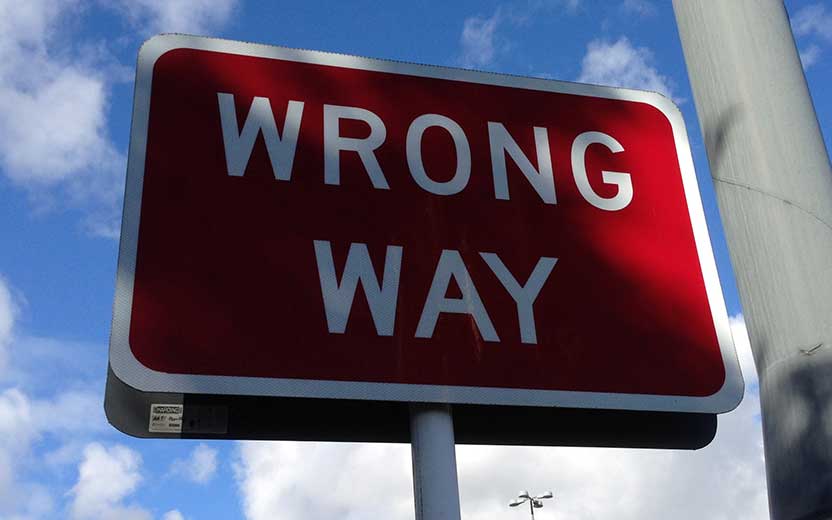By Marcus Fernandez
There are thousands of traffic accidents every year in Florida. In many of these cases, one driver may be responsible for the pain and suffering of the person they hit because of negligent driving behavior. But how do you tell who is at fault in a car accident, exactly? And what constitutes negligent behavior?
If you’ve been severely injured or someone you love was killed in a Florida car accident, you could be entitled to compensation if you can establish what happened was the result of someone else’s negligence. Let’s go over the details of how courts tell who is at fault in a car accident.
Negligence & Telling Who Is At Fault In a Car Accident
Negligence is a legal term, meaning there are four requirements someone has to meet to be considered negligent in a car accident case. These requirements include proving:
- They had a duty to keep you safe. That means someone driving a motor vehicle has a legal obligation to exercise reasonable care. This includes keeping the car under control at all times, obeying the traffic laws, and watching for other vehicles and pedestrians.
- They failed in that duty to keep you safe. If another driver failed to take reasonable precautions (like checking their mirrors, using their lights, or watching the road), then they’ve breached their duty of care.
- Their failure of duty caused you harm in some way. Even if someone was behaving in a negligent manner, you still have to prove that negligent manner directly caused you harm. Harm can be to your body, your mind/emotions, or your personal property.
- Any damages that you suffered. Finally, a negligence case involves determining damages, which help the court determine how much the at-fault party owes you. This part involves adding up hospital bills, car repairs, as well as calculating damages for things like emotional pain and mental anguish.
At KFB Law, our car accident attorneys look at the specific circumstances of each case when determining exactly how to prove negligence. If you’ve been permanently hurt after a car accident, seeking out damages may be the only way you can afford medical care going forward.
Florida is a no-fault state. What does that mean?
Florida is a no-fault state (as opposed to an at-fault state). This means that every driver is required to carry their own personal insurance policy (PIP) of at least $10,000. In case of an accident, all parties involved have to file a claim with their own insurance, who will then (in theory) handle medical expenses and lost income.
However, this doesn’t mean you’re restricted from taking action against someone who’s responsible for your injuries. With the help of a personal injury lawyer, you can still file a lawsuit against someone if you’ve suffered severe injuries or a loved one died in a crash.
PIPs don’t always cover the full extent of lost wages and medical expenses, so a personal injury suit might be the only way you and your family can recover after an accident.
Can car damage prove who is at fault in an accident?
Courts often look at physical evidence when determining fault. The most obvious place to look is to see where damage is on a car from the point of impact, including on front and rear bumpers, sides of the car, and cracks on windows.
Other places to look for evidence include the anti-lock braking system, the headlights, and automatic safety features.
However, looking at physical damage doesn’t always tell the whole story. Your lawyer can help you piece together a full picture by gathering other documents, including what’s listed below.
What do I do after a car accident?
The first thing you should always do after a car accident is to seek medical treatment.
You should go to a doctor for two reasons:
- To treat any serious injuries right away. Your health and safety should be your priority.
- To get documentation for injuries caused by the accident. Getting the proper medical documentation is key for proving negligence and determining damages later on.
You should also take notes of what happened if possible. Write them down on a sheet of paper, in a notes app on your phone, or in a voice recording. Your notes should include:
- The location of the crash and what happened
- The other driver’s name, license number, and insurance details
- Pictures of the damage to your car and any injuries you or your passengers sustained
- Contact information for witnesses
You should also file a police report, especially if the other party leaves the scene of the accident without giving you their information. Even if they’re not at fault for the car accident, leaving the scene of an accident is still a violation of Section 316.01 of Florida motor law.
Common Causes of Accidents
The most common cause of car crashes is human error. These are some of the leading driver behaviors that lead to accidents:
- Distracted driving or texting while driving
- Driving under the influence of drugs or alcohol
- Speeding
- Failing to obey traffic lights and stop signs
- Tailgating and other acts of reckless or dangerous driving
Your car accident lawyer may be able to prove someone is at fault in all of these situations, even if there are compounding factors like weather.
For example, just because there are slippery road conditions after a rainstorm doesn’t mean that a driver isn’t at fault. Drivers must leave more stopping distance between vehicles and take greater caution to account for dangerous road conditions.
How We Can Help
If you’re still wondering how to tell who is at fault in a car accident, you should consult the experienced personal injury attorneys of Kinney, Fernandez & Boire.
Our team will carefully evaluate your case to establish if another party is at fault and determine who should be held liable for your injuries—so you can focus on recovering. Click here to contact our office for a free case evaluation and consultation today.


